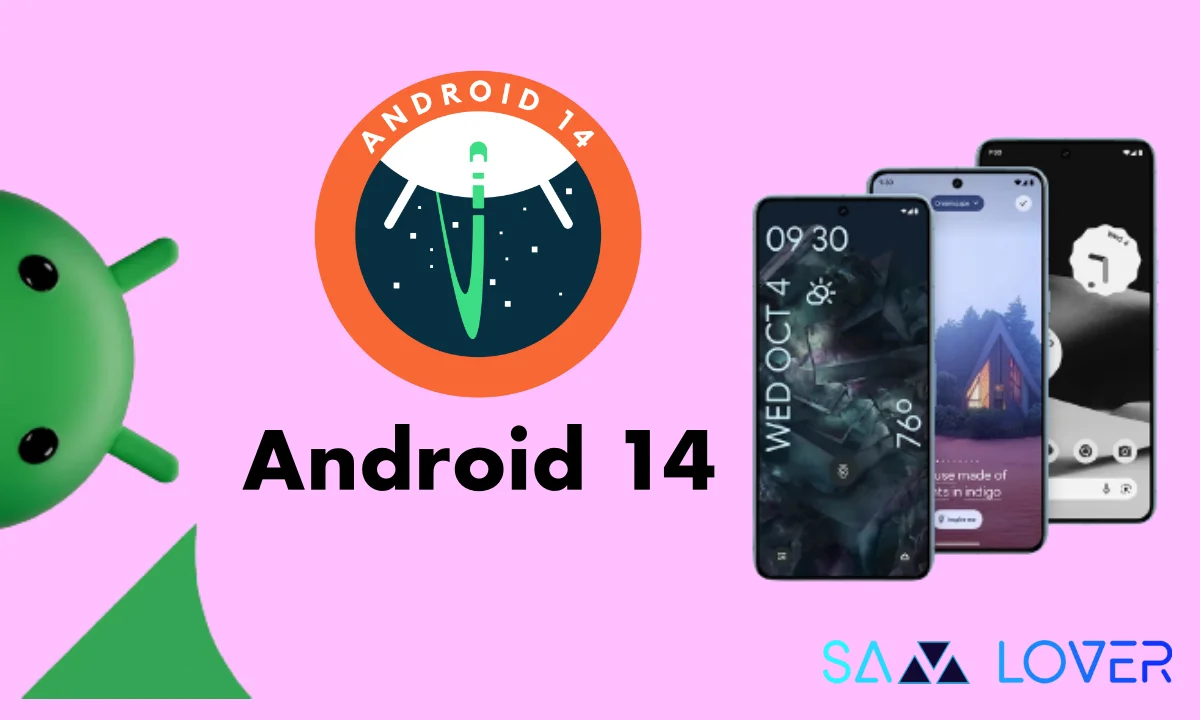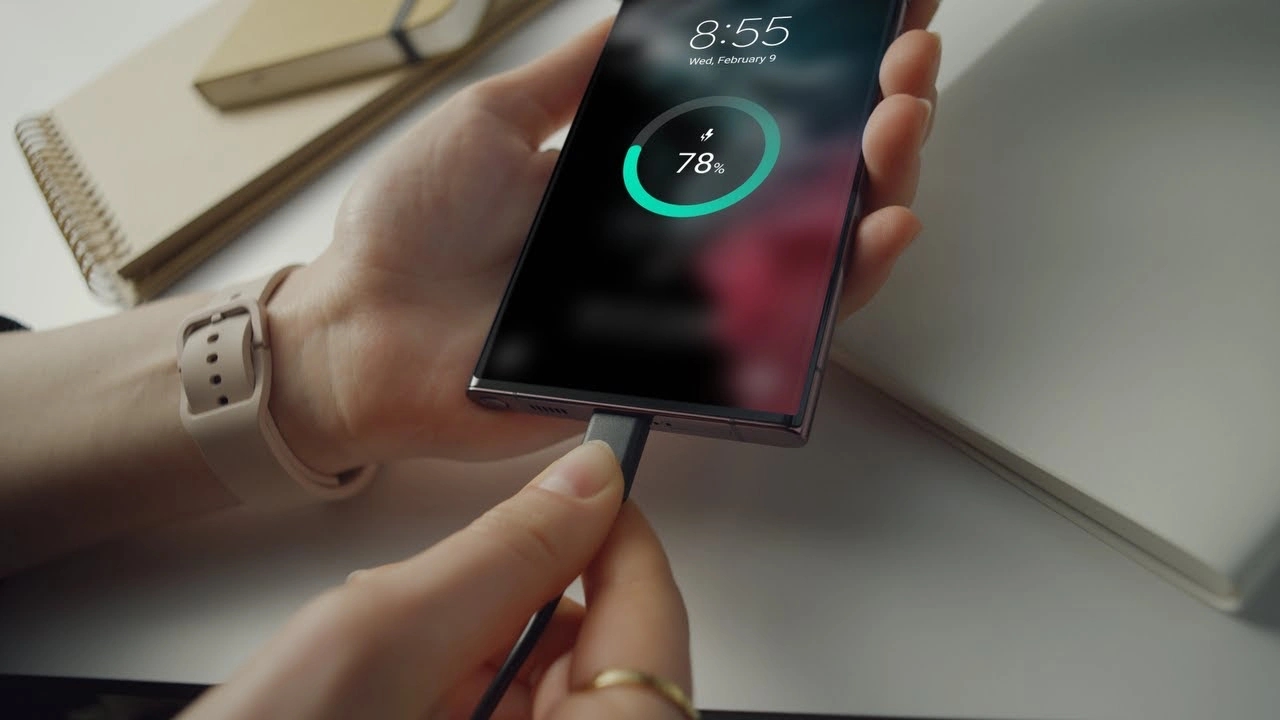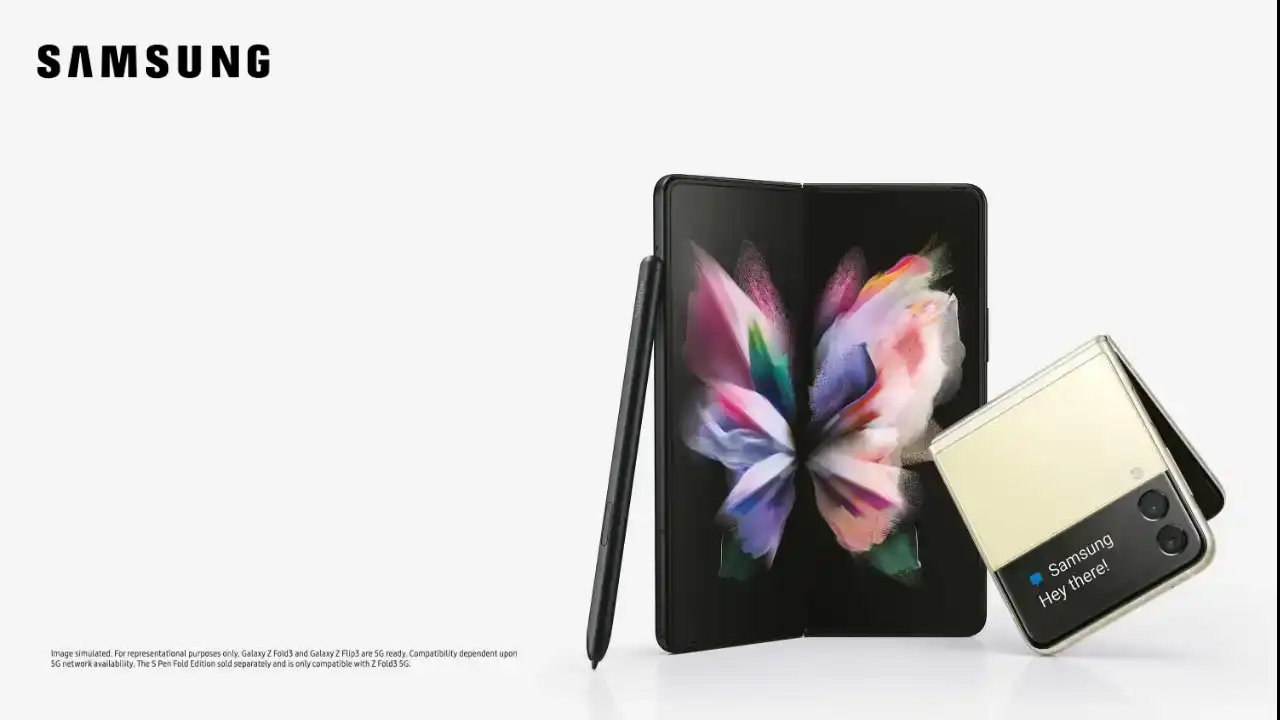News
Android 14 Stable update is here, what’s new

The exciting news is here: Google has begun rolling out Android 14 to all Pixel smartphones and tablets that can run it. This significant update comes about a month after the final beta release, which marked the end of the development cycle. It’s also a bit later than originally expected, as there were discussions about it arriving on Tuesday, September 5, 2023. However, since September 4 was Labor Day in the United States, it’s now coming out a bit later.
Google chose to unveil this new software version during the launch event for the Google Pixel 8 and Pixel 8 Pro. Android 14 introduces a bunch of exciting changes, both in terms of how it looks and how it works. Some of these changes will be exclusive to Pixel devices, while others will be available for other smartphone manufacturers to use in their own versions of Android. Let’s dive into all the specifics.
As we mentioned earlier and as expected, Google, based in Mountain View, has officially begun the stable release of Android 14 for all compatible Pixel devices. This release marks the end of a lengthy development cycle that began on February 8 with the release of Developer Preview 1, spanning over six months and including multiple preview versions, such as two Developer Previews, five betas, and numerous bug-fixing updates.
One UI 6.0: Release Date, Beta info, Supported devices, and more
This is the first official and stable version of Android 14, initiating a series of quarterly updates (known as QPR, Quarterly Platform Release) and Pixel Feature Drops, which are characteristic of Google’s ongoing development efforts. The first of these updates, Android 14 QPR1 beta 1, is expected to arrive this week.
For Pixel device owners, this update also serves as a Pixel Feature Drop, enhancing the experience with new features while incorporating the latest security patches updated to October 2023.
Android 14: What’s New
Until Android 9 (Pie), each version of the Android operating system was associated with a specific treat or dessert that started with the corresponding letter of the alphabet. Some notable examples include Android 4.4 KitKat and Android 8 Oreo. While this tradition has somewhat faded since Android 10 (Q), it still exists in a less prominent way.
For instance, Android 13 was internally referred to as “Tiramisù,” and Android 14, corresponding to the letter U, is known internally as “UpsideDownCake,” which is an inverted cake. While these dessert names may not be as widely publicized as before, they continue to be a fun part of Android’s development process.
Android 14 Easter Egg
In each version of Android, there’s a hidden Easter egg that can be found by repeatedly tapping on the “Android Version” in the “Settings > About the Phone > Android Version” menu.
The Easter egg for Android 14 is space-themed and was introduced during the development cycle. When activated, it displays the official Android 14 logo, which resembles NASA’s Apollo 14 mission logo. If you press and hold for a few seconds, the smartphone will vibrate, simulating the takeoff of a spaceship. Afterward, a sort of game will begin, allowing the user to control a spaceship in search of celestial bodies. However, there’s no way to win the game; it’s more of a fun interactive experience.




Aesthetic and personalization news:
Android 14 continues to refine the design philosophy of Material You, which was introduced by Google with Android 12 and further evolved with Android 13. The focus remains on maintaining a clean and undistorted design while introducing clever changes. These changes extend to the management of dynamic colors, which now permeate even the smallest details of the settings menu, creating a harmonious experience.
The most noticeable changes in Android 14 revolve around customization. Many of these customization options can be found within the Background and Style app, which has undergone significant revisions compared to previous versions. It’s now organized to separate customization for the home screen from customization for the lock screen, providing users with more control over the look and feel of their devices.
Customizable lock screen
In this regard, a great novelty is precisely the customizable lock screen: compared to the past, now, you can first change the design of the present watch, choosing from some options of style, font, size and color.
It is then possible to customize, finally, the two quick links present at the bottom, choosing between nine different possibilities (as long as the user chooses to take advantage of the link which, otherwise, can be hidden). The possibilities are:
- QR code scanner
- Torch
- video camera
- Notes (only available if there is an app set as the default for Notes on your smartphone, another feature that will be introduced with Android 14)
- Silent
- Wallet (only available if at least one payment card has been associated with the app)
- Camera
- Don’t disturb
- Google Home Device Control
Emoji wallpapers and movie wallpapers: Another significant update in Android 14 is the introduction of new types of backgrounds by Google. These include emoji backgrounds and movie backgrounds, which have already garnered attention and were extensively discussed with the latest versions of Android 13. These new background options offer users more creative and expressive ways to personalize their devices with emojis or scenes from their favorite movies.
- onochrome Theme and Themed Icons: Android 14 introduces a monochrome theme that allows users to set their smartphones with highly contrasting dynamic colors, often using black and white. Additionally, themed icons have been revamped, offering more vivid options, although they may vary in readability depending on the theme colors.
- Font Size Quick Toggle: In the control center accessible by swiping down, a new “Font Size” toggle has been added. This feature allows users to easily adjust the font size with a simple tap.
- Separate Volumes for Call and Notification Ringtones: Android 14 separates the volume controls for call ringtones and notification sounds. Users can now set notifications to be silent while still receiving incoming calls with a ringtone.
- Access to Clock App: Tapping on the time in the control center now opens the Clock app, providing a quick way to access the clock.
- Optimized Energy Savings: The Energy Savings menu has been reorganized for better clarity. It offers two modes: “basic” and “extreme,” with the latter being more accessible. Users can also select apps to include in extreme power saving mode and set schedules for energy-saving activation. The “Adaptive Battery” feature, previously found in the “Adaptive Preferences” menu under battery settings in Android 13, is now included here.
- Renovated “Security and Privacy” Hub: The “Security and Privacy” hub, first introduced in Android 13 QPR1, has undergone slight changes in Android 14. Drop-down menus in some subsections have been replaced by corresponding submenus, providing a more visually consistent interface.
- Partial Screen Recording: Android 14 brings the ability to record or share a specific app or portion of the screen. Users can select “Record a single app” from the screen recording dialog, allowing them to choose which app to record from recent apps or the app drawer. This feature provides more control over screen sharing to prevent sharing unintended content.
- Enhanced Media Access Control: Android 14 offers improved control over which media files apps can access. Users can grant full access, no access, or partial access, selecting specific photos and videos for each app.
- Improved PIN Privacy: To enhance user privacy during PIN code entry for device unlock, Android 14 introduces a feature where only the enter and delete keys show animations. When users tap a number, a dot appears in the input field. Additionally, an option to remove the confirm button has been added, allowing for direct unlocking after entering the correct PIN.
- Accessibility and Inclusiveness Enhancements:
- Flash Notifications: Android 14 includes a “Flash Notifications” feature in the Accessibility settings. It flashes the LED of the camera, display, or both upon receiving notifications. Users can even choose the notification color on the display, providing accessibility support and reviving the concept of notification LEDs.
- Hearing Protection: A hearing protection feature assesses sound exposure when using headphones. It uses Computed Sound Doses (CSD) to analyze audio signals, prevent hearing damage, and adjust volume accordingly. Users receive alerts based on CSD thresholds to lower the headphone volume to a safer level.
- Larger Fonts and Non-linear Resizing: Android 14 allows users to increase font size by up to 200%, compared to the previous limit of 130% on Pixel devices. The operating system implements a non-linear resizing curve for characters, ensuring that text remains legible and proportional even when fonts are enlarged.
What’s new for the language supported by apps
With regard to languages, reasoning in terms of inclusivity, the Android 14 development team has included two new features:
- Language preferences by app
Developers can dynamically update their app’s localeConfig to customize the list of languages displayed within languages for each app, editable (user side) to the path ‘Settings > System > Languages & Input > App Languages’. In a nutshell, developers will be able to customize the various language lists region by region, possibly providing up-to-date locale. - Grammatical Flex API
The new Grammatical Infection API allows developers to equip their apps with support for users who speak languages with grammatical gender, a language-related factor that cannot be easily circumvented in languages other than English.
News
Samsung Prioritizes Faster Charging in 2024 Smartphones

The first quarter of 2024 is already over; during this interval, Samsung has introduced several Galaxy smartphones of particular belonging, such as the flagship Galaxy S24 series, the Galaxy A55 and Galaxy A35, the mid-range ones, the Galaxy A15 and Galaxy F15, the budgetable ones, and many more. But the fact is, after being the latest smartphones, they have a lack of ‘charging speed.’
Undoubtedly, Samsung is leading the tech industry with its top-notch features, design, and larger batteries, as compared to other Android manufacturers, but despite all this, it has a massive lack of charging speed. Samsung usually attaches larger batteries to its Galaxy smartphones to enhance the users’ non-stop-using experience. But a larger battery isn’t worth it unless it has a good charging speed.
On the other hand, Chinese manufacturers are equipping their smartphones with charging speeds north of 100W, whereas 45W is the maximum speed you can get on Galaxy smartphones. However, even 45W charging is quite rare among Galaxy phones. Samsung has launched most of the Galaxy devices in the last couple of years, including the flagship with support for 25W.
Here we are making things easy for you if you are looking to buy a Galaxy smartphone that debuted in 2024 with the support of 45W charging speed by mentioning a list of devices:
- Galaxy S24 Ultra
- Galaxy S24+
- Galaxy F55
- Galaxy M55
- Galaxy C55
The list is quite short, even considering that the Galaxy F55, M55, and C55 are just rebranded variants of the same smartphone for different regions. Now Samsung is setting up to launch its next-generation foldable devices, the Galaxy Z Fold 6 and Galaxy Z Flip 6, in July, but it is yet to be confirmed whether these devices will get a boost in charging speeds from 25W or not.
News
New Galaxy Phone In Existence: Samsung Galaxy M35 5G Spots On Geekbench

The Korean brand – Samsung has recently announced its two mid-range Galaxy smartphones – Galaxy A55 5G and Galaxy A35 5G. A new benchmark listing has a spot for Samsung’s affordable smartphone, Galaxy35 5G.
Samsung is now gearing up for its next affordable Galaxy smartphone, the M35 5G, as the reports are unvunveilhey have found a new benchmark listing for Samsung the Galaxy M35 5G.
The smartphone has been spotted with the model number as an identification code – SM-M356B on the Geekbench 6.2.2 database. Not only this, but it also confirmed the presence of 6GB of RAM and Android 14 OS. The chipset also came to know which is the latest Exynos 1380.
The codename for the motherboard is also mentioned, which is ‘s5e8835.’ The reports say that it has scored 656 and 1967 points in performance scores on the benchmarking platform. Exynos 1380 is the latest chipset of the Korean brand, which is a 5 nm processor. It consists of 4 Cortex A78 cores, which clock at 2.4GHz, and 4 Cortex A55 cores, which clock at 2.0GHz. It is coupled with a Mali g68 MP5 GPU. It also has an AI Engine.
This also offers connectivity options, which include the latest Bluetooth version 5.3 and Wi-Fi 802.11 ax with three bands. It supports a camera resolution of at least 200MP for capturing images, and for video recording, there is support for up to 30fps 4K recording. The storage supported is UFS v3.1, and RAM will be of the LPDDR4x/5 type.
Samsung has recently debuted its two smartphones, Galaxy A55, and Galaxy A35; the Galaxy A35 5G smartphone is powered by Exynos 1380 chipset. From this perspective, Galaxy M35 5G could be a variant of Galaxy A35.
At the moment, no specs and features of the device have been revealed or leaked. Still, since Galaxy M series smartphones usually have a bit higher battery power of at least 6000mAh, the forthcoming Galaxy M35 5G smartphone also arrives with the same battery power.
Firmware
Verizon rolls out the March 2024 security patch update for the Galaxy Z Fold 3 and Galaxy Z Flip 3 devices

Verizon has rolled out the March 2024 security patch update for the Galaxy Z Fold 3 and Galaxy Z Flip 3 devices. Earlier, these devices had received the same update outside the US, but now they are gradually expanding to the US.
The Galaxy Z Fold 3 and Galaxy Z Flip 3 are spotted getting new updates with the firmware version numbers F926USQS5HXBD and F711USQS6HXBD, respectively. It is worth noticing the update is currently available for the devices locked to Verizon, but it will soon be available on more carriers.
For your information, the latest update for Galaxy Z Fold 3 and Galaxy Z Flip 3 doesn’t bring any significant changes, but as it is the latest security patch, it will provide some internal fixes to maintain the security of the devices.
If you are getting some other issues from the last update, you should also update the device to the latest update, as it may also address some issues. Along with the update, other improvements may also be made to enhance the overall performance of the devices.
Suppose you use the Galaxy Z Fold 3 or Flip 3 device in the US. In that case, you can update the device to the latest version by simply going to the system settings and then to the software update. If you haven’t received the update, you should wait for some time, as it may arrive in the next few days.












